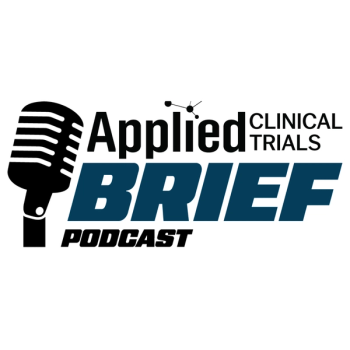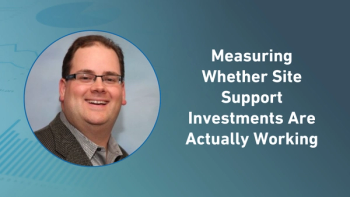What clinops professionals need to know
Pharma R&D productivity continues to lag despite record spending, with trial complexity, investigator shortages, and patient recruitment challenges driving high attrition and long timelines. Emerging strategies focus on expanding investigator and patient engagement, leveraging adaptive and decentralized trial models, and aligning early with regulatory and payer expectations. Real-world data and analytics are playing a growing role in indication expansion and portfolio decision-making, offering a pathway to reduce risk and accelerate delivery of therapies to patients.
In an era where R&D spending has climbed yet returns on investment are stagnating, pharmaceutical leaders must make evidence-based investment decisions targeting first-in-class and best-in-class therapies. Recent years have underscored this imperative: new molecular entity (NME) approvals remain below expectations, despite record investments, while US and international payers increasingly demand clear value and measurable patient outcomes alongside regulatory approval.
Contemporary R&D realities: Informed choice, not just cost cutting
While headcount and process efficiencies offer only temporary relief, true, sustainable advantage depends on:
- Robust market, technical, and regulatory analytics,
- Strategic allocation between near-term, de-risked assets and high-value, high-potential programs,
- Active scenario planning against evolving payer, competitive, and patient demands.
Key investment criteria for a modern portfolio
Successful organizations systematically evaluate:
- Cost, timeline, and success probability (now scoped against global regulatory pathways and HTA requirements),
- Marketability and access (through segmentation, pricing, and delivery models),
- Indication expansion options (using real-world data and adaptive clinical designs),
- Operational feasibility (including recruitment landscape and digital/decentralized trial capability).
Market example: Weight loss and cardiometabolic disease
Recent years have seen a shift as companies target multiple, related indications:
- Eli Lilly’s tirzepatide (initially developed for type 2 diabetes) leveraged Phase II/III data to expand into obesity and cardiovascular risk reduction. This “niche-buster” approach resulted in a significant market share across three blockbuster indications. At the same time, payer and HTA bodies supported access through evidence of not only efficacy but also cost savings and comorbidity reductions.
- Novo Nordisk’s semaglutide followed a similar path, rapidly capturing the obesity market, driven by robust real-world outcomes and effective extension of clinical label across adjacent diseases.
Strategic questions for 2025
Organizations need to answer:
- Which areas blend technical feasibility with addressable market need?
- For emerging fields (e.g., rare diseases, cell & gene therapy), which indications offer lower regulatory and commercial friction?
- Where can digital interventions or combination therapies accelerate reimbursement or patient adoption?
Market example: Rare genetic diseases
- Vertex Pharmaceuticals became an industry leader by targeting cystic fibrosis—a rare, genetically defined patient segment—with clear registrational advantages, high payer willingness, and the ability to extend the platform into adjacent rare and ultra-rare indications. This niche focus, backed by real-world registries and patient journeys, enabled them to unlock orphan pricing and rapid expansion.
Niche-buster and indication expansion paradigm
New regulatory incentives in the US, EU, and APAC encourage targeting rare/ultra-rare diseases, as well as iterative label expansion. There’s a strategic focus on:
- Initial approval in a genetically or biomarker-defined niche, then real-world data-driven expansion.
- Oncology: Keytruda (Merck) started in melanoma, swiftly expanded into >15 indications, guided by robust real-world evidence and value-based contracts with payers.
- Gene therapies: bluebird bio’s Zynteglo (beta-thalassemia) and Zolgensma (Novartis, for spinal muscular atrophy) illustrate high-value, single-indication launches with rigorous post-marketing commitments as a path for portfolio extension.
Evolving analytical approaches:
The “indication tree” methodology has evolved for the digital age:
- Advanced data science builds upon historical attrition, cost, and patient need,
- Competitive intelligence rapidly identifies greenfield opportunities—e.g., Immuno-oncology’s expansion into new solid tumors post-PD1 success,
- Operational models now factor in decentralized trial capabilities, remote patient monitoring, and AI-enabled site selection to lower risk and timelines.
Market example: Digital & decentralized trials
- Pfizer/BioNTech and Moderna demonstrated the value of global digital recruitment and real-time trial management for COVID-19 vaccine development, enabling synchronized regulatory filings and broader, faster access across regions.
Strategic benefits for clients
Through this modern, data-driven, market-informed approach, organizations can:
- Identify and prioritize disease areas with optimal trade-offs between cost, timeline, and success probability,
- Anticipate payer and regulatory challenges before they become barriers,
- Build diversified portfolios that incorporate short-cycle wins and longer horizon, high-risk/high-reward pipelines,
- Track and measure pipeline performance vs. industry benchmarks and competitor signals.
Expanded value from external data assets
Real-time analytics now integrate:
- RWE/EHR data to inform trial design and launch planning,
- Global registry data—e.g., in oncology or rare diseases—to predict access timelines,
- Market access intelligence—tracking payer policy shifts in response to new modalities (RNA therapies, digital therapeutics, biosimilars).
Conclusion
Companies combining next-generation analytics, real-world market insights, and tactical operational execution are achieving meaningful improvements in R&D ROI, market access, and, ultimately, patient outcomes. The combination of precision asset selection, agile indication expansion, and future-proofed launch strategy is how the winners of 2025 and beyond are being made.
Partha Anbil is at the intersection of the Life Sciences industry and Data & Analytics, including GenAI/ML/NLP. He is currently a Senior Advisor to NextGen Invent Corporation.
Jayanthi Anbil has over 15 years of experience in the Life Sciences Industry. Until recently, Jayanthi was with ICON Plc as a Global Business Intelligence Manager.





